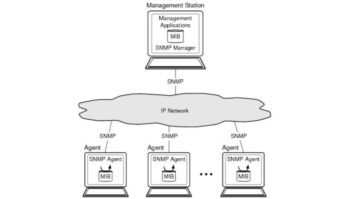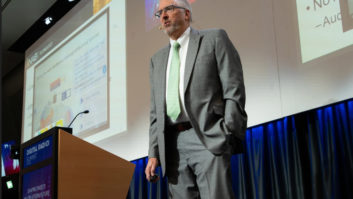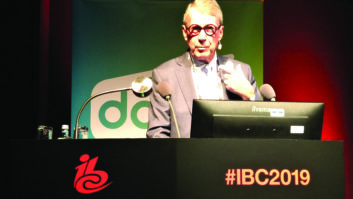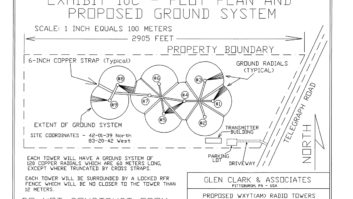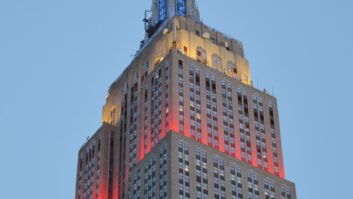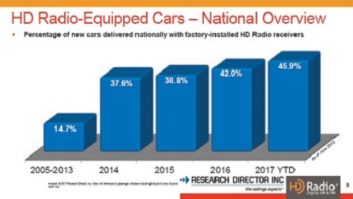SEATTLE A variety of products are now available to serve the expected needs of stations converting to IBOC/HD Radio.
At this fall’s NAB Radio Show, exhibits included some new products and some that had been on display in the spring. Here’s a quick rundown.
Several vendors touted a new FM IBOC implementation that proponents say eliminates injector loss and reduces or eliminates many of the startup costs to make the digital transition for multi-stations using a master antenna.
Broadcast Electronics is one of those companies. In its booth, BE picked up a digital signal off a Visteon HD radio from Entercom Seattle station KISW(FM). The station is transmitting Ibiquity’s in-band, on-channel digital audio broadcasting system to a master antenna system without injecting the digital signals into an FM analog carrier.
BE says this approach eliminates the 90 percent loss in digital signals and 10 percent loss in analog signals associated with injecting the digital signal into the FM analog carrier, the standard high-level combining scheme.
In August, Entercom engineers and engineers from Ibiquity Digital, Broadcast Electronics and Shively Labs tested the concept at Entercom Seattle’s auxiliary site on Cougar Mountain, and provided preliminary findings to the FCC (Radio World, Sept. 11, page 6).
At the convention, BE’s Richard Hinkle, director of RF engineering, called the separate antenna concept “unique” and said attendees asked a lot of questions about the concept.
“The reason it’s important is because in a high-level combine system, you have a 10 dB loss in your IBOC path. … It’s the difference between buying a 5,000-watt IBOC transmitter and a 500 -watt IBOC transmitter. That’s a significant cost (savings) in implementation.
“Entercom has proven it works and works well,” he said. “For those people, the big question is, ‘Do I have room on my tower and loading…that will take it?’ If they do, it’s a cost-effective implementation. That’s really the difference in what we’re showing. It’s not only the end-to-end commercial product, but a new implementation of IBOC in the real world.”
BE also showed its IBOC exciters, the FXi series, which BE says allows stations to choose either common or separate amplification from one unit and IBOC-compatible transmitters.
Nautel displayed its NE IBOC Digital AM/FM exciter and associated transmitters.
Harris Broadcast Communications Division introduced an IBOC-ready, low-power line of AM transmitters called DAX. A 5/6 kW model was on display.
Harris’ Daryl Buechting said the main advantage of the DAX is that it is ready to have the digital exciter plugged in and transmit. No modifications are necessary for the unit to transmit IBOC, he said. Next spring, Harris plans to introduce 1 kW and 3 kW versions.
Dielectric displayed an FM isolator that could be used for IBOC implementations. The product does not yet have a name. The isolator keeps the transmitted analog and digitals separated so that they do not interact.
Dielectric FM Product Manager Matthew Leland said separation, using the isolator, could eliminate the high insertion loss typically associated with a standard combining method. He said the product is not for all applications and customers may need to choose between a larger, more expensive antenna and filter vs. a higher-power transmitter. The isolator could also be used on existing constant impedance combiner systems and when the analog and digital signals are kept separate and sent to two separate antennas.
ERI displayed photos of a dual-input antenna, in which all the array elements will radiate both the analog and digital signals. This antenna combines the digital and analog signals without the 10 dB loss associated with the hybrid combining approach, according to ERI. A project is underway to retrofit an existing ERI antenna on top of the Prudential Building in Boston with this technology for Greater Media.
Eric Wandel, ERI’s director of product development, said Greater Media will have a choice to reverse-feed the digital signals through the existing combiner system, but may choose to use a new line of ERI’s low-power filters in a separate combiner system. Wandel said this would allow the radio group the flexibility of adding other stations that could transmit from the dual input antenna.
ERI displayed its IBOX combiner for 10 dB high-level combining. The product has a flange-to-flange separation of 10 inches, which ERI says makes the unit compact and simple to adapt to existing transmission line runs.
Shively displayed its IBOC filter-combiner as well as its Interleaved Analog-Digital Antenna for use with low and medium-power systems.
Armstrong showed HD Radio-compatible amplifiers.





